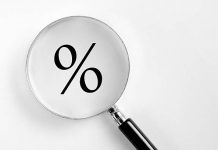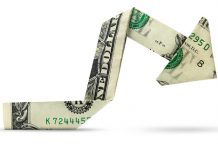Retail sales edged up by only 0.1% m/m in September, disappointing the expectations for a 0.6% gain.
A massive decline in sales at food services and drinking places, which fell by 1.9% and marking its worst monthly performance since December 2016, weighed heavily on the headline. This category had a stellar performance in the prior months, and the September slump can likely be chalked up to hurricane Florence. Sales at gasoline stations were also down 0.8%, the first monthly decline since July 2017.
Meanwhile, following three months of weak data, sales at auto & parts dealers rose 0.8% in September, something that was already communicated in the strong vehicle sales report two weeks ago. Sales at building material stores edged up 0.1% in September.
Excluding the above volatile categories (gas, autos, building materials, and food services), the so-called ‘control group’ used in calculating GDP did much better, rising 0.5% on the month – slightly ahead of expectations for a 0.4% gain. Delving into the details, most categories rose on the month. Sales of furniture (+1.1%) and electronics & appliances (+0.9%) were up; retailers selling clothing (+0.5%) and sporting goods (+0.7%) also did well.
Sales at general merchandise stores rose by a modest 0.3%, however, sales at department stores continued to be soft, declining 0.8%. Meanwhile, online retailers had a decent month, with sales up 0.7% on the month, and 10.3% from a year ago.
Key Implications
Despite the weak headline, the September retail sales report offers few signs for concern. The disappointing headline print was likely heavily influenced by hurricane Florence. This is reaffirmed by the unusual weakness in the restaurant sales figures.
Most importantly, core retail sales remained strong, suggesting there’s little reason to worry about U.S. consumers right now. Job growth remains strong, wages are advancing and consumer confidence is high, suggesting U.S. consumer spending will likely average around 3.5% (annualized) in the third quarter. Coming on the heels of 3.8% gain the prior quarter, this would mark the best back to back quarterly performance since 2014.













